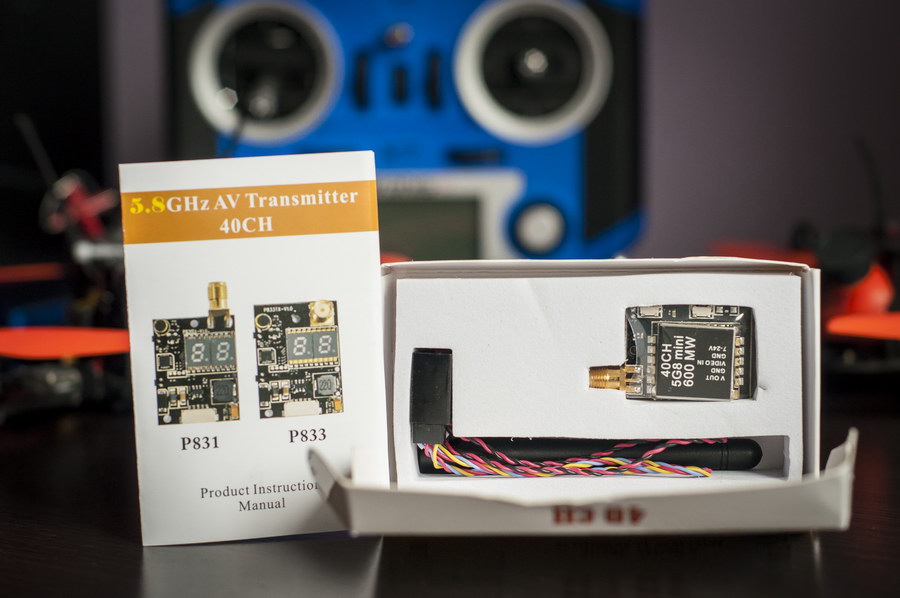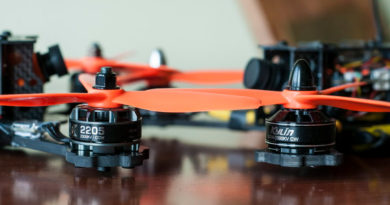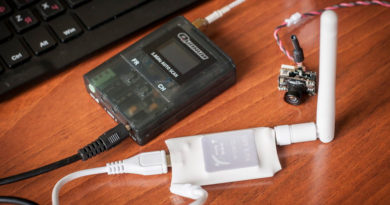New products from AKK Tech — K31 VTX and A5 3-in-1 set

Its been a while since our last news about AKK Technology latest products. But are happy to mention that this company R|C products lineup is growing and gathering the attention of many pilots around the world. By collaborating with Aliexpress and creating their own site with a webshop AKK Tech made the purchase process much easier for Asia, Eurpore and CIS region which would also positively affect their presence on the different markets.

Let us remind you about AKK products that we’ve already tested:
- A1 3in1 mini FPV Cam+VTX set
- CA20 FPV camera
- X1P | X1 FPV VTX
- TS5828 FPV VTX
- LR2 5.8GHz cloverleaf antenna set
- ML2 5.8GHz cloverleaf antenna set
Our short summary: we were impressed with A1, CA20, X1P and LR2 product perfromance. They look similar to other brands but the price to performance ratio was unbeatable in case if you’d buy it from AKK. We are still using these until now in our FPV quads, for about 3 months and have no quality issues.

Today, we have something new:
- AKK A5 — 3-in-1 mini FPV cam+VTX (25mW, 40CH)
- AKK K31 (K33) 5.8GHz 40CH 600mW VTX
Let’s start with AKK A5:

AKK A5 tech specs:
- Output power: 25mW
- Input power: 3.2–5V
- Current consumption: 3.2V-5V, 200mA
- Camera resolution: 600TVL
- Video system: NTSC
- Minimum illumination: 1 lux
- Field of view: 120° viewing angle
- Antenna dimensions: 22mm
- Antenna: dipole
- Frequency: 5.8GHz 5 bands 40 channels (with raceband)
- Size: 18.7*13mm(L*W)
- Weight: 4.5g
Features:
- Compatible with 5.8GHz googles and monitor.
- 40 channel with raceband
- Good quality image with zero latency
- Button control instead of switches to change channels
Package includes:
- 1x A1 AIO FPV Camera and VTX
- 1x Power Cable with 1 extra adapter
- 1x Manual
This mini FPV set looks pretty similar to AKK A1 mini FPV set from our previous reviews. The obly major difference is that A5 comes as separate FPV cam and VTX connected with wires instead of one soldered piece in case of A1.
Such module separation would have its pros and cons:
Pros:
- Easier to fit into different frames because we can move camera and VTX around
- Easier to fit into different frames regarding non-removable VTX antenna
- Easier to fix either module by replacing it (instead of replacing everything)
Cons:
- A bit more weight of two elements + wires
- A bit less neat setup because of wires
- A bit more space on frame to consume
That is how we see it… As an example — we can take our KingKong GT90 (90mm FPV brushless copter) and try to fit AKK A5 or A1 FPV sets. In case of A5 — we do not see any problems — it has the same camera size and VTX that would easily fit on top of the upper frame plate. But such setup would be a bit heavier if compared to the same setup using AKK A1. On the other hand, AKK A1 would not fit perfectly. We would have to mod KK 90GT front part of the frame to fit it inside. But we would end up with less weight, less wires and front VTX antenna placement… Both setups would work fine, just with a slightly different approaches.

Viewing angle of A5 FPV camera seems to be close to declared 120 degrees FOV. The lens is hot glued at place to secure from unexpected turns and defocus. If it would suffer a hard crash we would still be able to replace the lens. Camera board size is regular: 14x14mm.
Camera has 3 pins JST connector with Video, +5V, GND wires which connects directly to the VTX board. VTX equipped with a single multifuntional button that changes CH (short press) and BANDS (long press) and blue|red LEDs that blink to infrom us about the selected CH (blue) and BAND (red).
There is a yellow wire loop on the camera to VTX connector. If you want OSD in your setup — just cut the loop and solder inner cable to VIN and outer to VOUT pads on OSD.
Full frequency table:

VTX antenna type is dipole.

A5 performance:
I can only compare A5 to A1 and KK 90GT stock camera. All three devices have the same 5.8GHz 25mW power output and the same dipole type antennas. A1 is a combined set of camera + VTX and KK90GT stock / A5 has separate camera and VTX boards.
I had a good head-to-head comparison video of A1 V/S KK 90GT stock FPV set performance which I’ve used now and added A5 performance to compare. Unfortunately, I’ve changed the travel path and had to reverse video footage for A5 to synchronize video from all three devices. But you would get a clue anyway, especially for the worst part — when I am walking behind my house.
I would say that A1 and A5 sets perform more or less similar to each other and definitely better than KK 90GT stock camera and VTX which completely lost signal behind my house.
So, either you choose A1 or A5 micro FPV set for your next build — both would do a good job for any micro quad!
You can buy AKK A5 on AliExpress, AKK website or on Amazon

Let’s switch to AKK K31 (K33) 5.8GHz 600mW VTX:
Tech specs:
- Output Power: 26-28dBm
- Operating Voltage: 7-20 V
- Output Voltage(VOUT): 5 V
- Supply Current: 280 mA
- Operating Temperature : -10 +85 ℃
- Video Band Width: 0-8.0 MHz
- Audio carrier Frequency: 6.5 MHz
- Video Input Level: 0.8,1.0,1.2 Vp-p
- Video Input Impedance: 75 Ohm
- Audio Input Level: 0.5 ,2.0 Vp-p
- Audio Input Impedance: 10K Ohm
Package includes:
- 1X5.8G FPV transmitter
- 1X5.8G antenna
- 1XConnector and cable set
- 1X Product manual
Features:
- Super mini, lightweight and durable
- It supports full range of 40 channels including raceband
- 40 channels, cover A, b, E ,F, r bands
- Easy to use 2 buttons and 2 LED display to change channels and frequencies.
Note: K33 variant has vertically aligned antenna connector

First of all what comes in mind when you buy this product is its size: 31x25x9mm which is kind of big in comparison to what we’ve got used to for 210-class frames setup. I would assume that such VTX should be rather used with 250 and up class frames. The best VTX option for 210 and smaller frames would be AKK X1 or X1P instead of «K» lineup. But those are perfect for 250, 330, 450 and larger copters, planes and other R|C models.

AKK K31 VTX equipped with 2 LED indicators and 2 buttons which which makes it fast and easy to choose the necessary channel and band. Full frequency table:

Now, lets see how it performs against AKK X1 at 200 and 600mW and AKK TS5828:
Video shows that AKK K31 performs very similar to AKK X1 (X1P). One of the best VTX I’ve tried so far. Such testing environment is kind of tricky — the more power VTX would output — the more interference and noise we would get. AKK X1 has the ability to switch power output (25-200-600mW) which makes it perfect for racing and to compensate such strong signal back reflection of the testing location. That is why it performs better at 200mW in comparison to 600mW. Surprisingly, AKK K31 which has 600mW fixed power is almost on par… and much better than AKK TS5828 VTX that also has 600mW fixed power and suffers much from back signal interference.

So, I would say that if you want 600mW VTX for your 250 class and larger FPV copters or other models — AKK K31 (K33) is a very decent performer and very easy to operate. But if you want something good for your 210 frame — it is better to stick to AKK X1 (X1P) VTX.
You can buy AKK K31 VTX on AliExpress, AKK own shop and on Amazon




